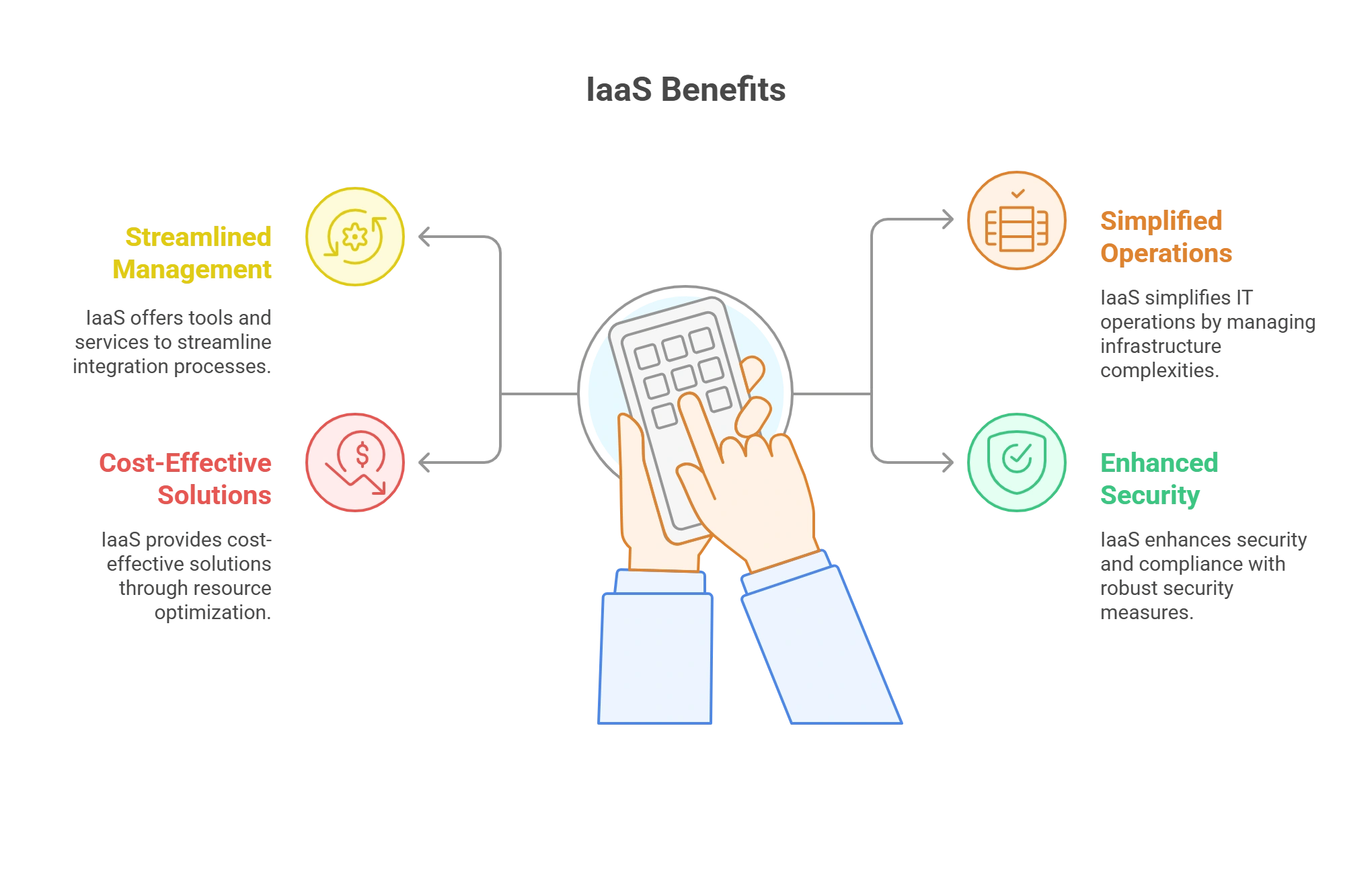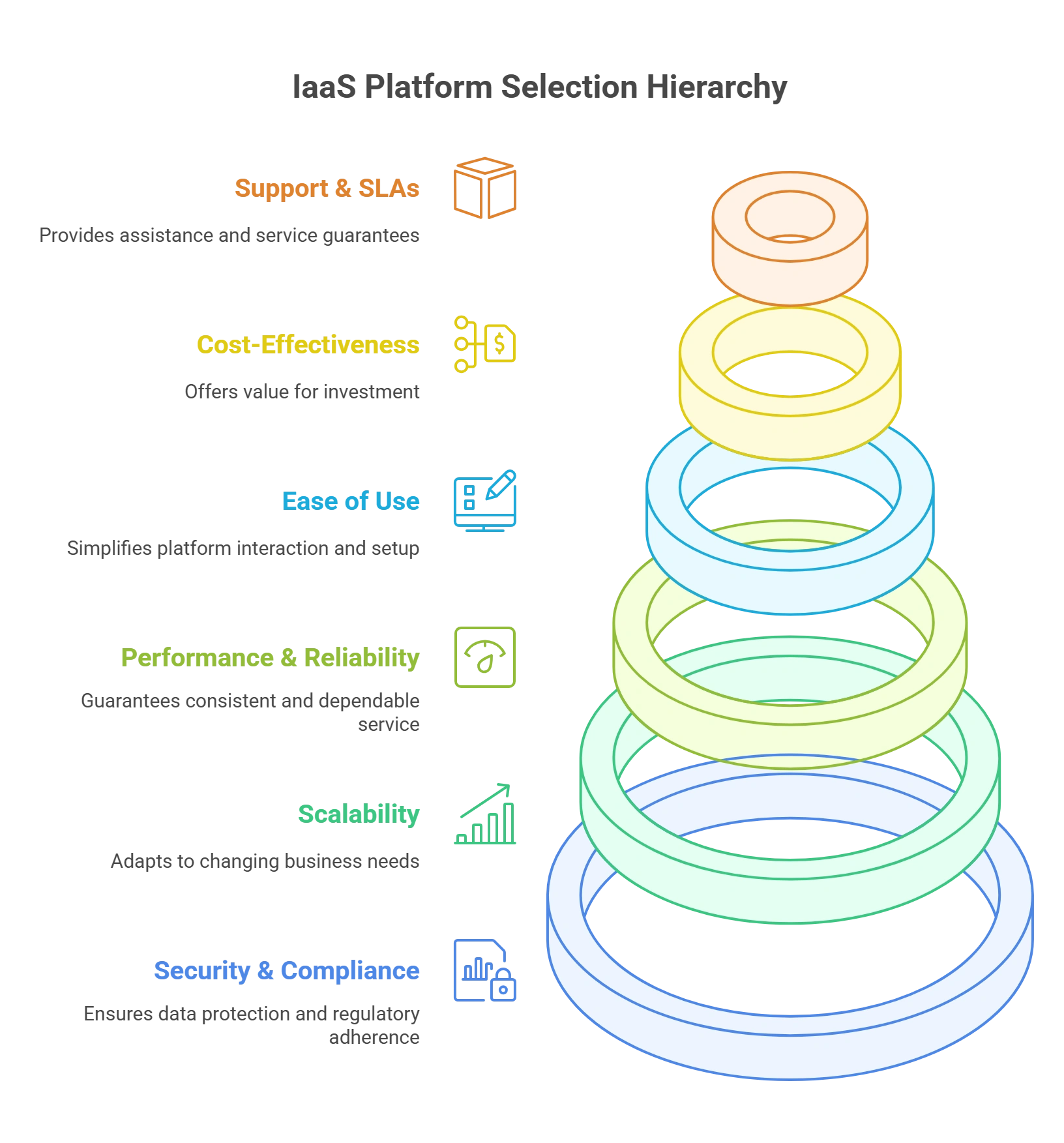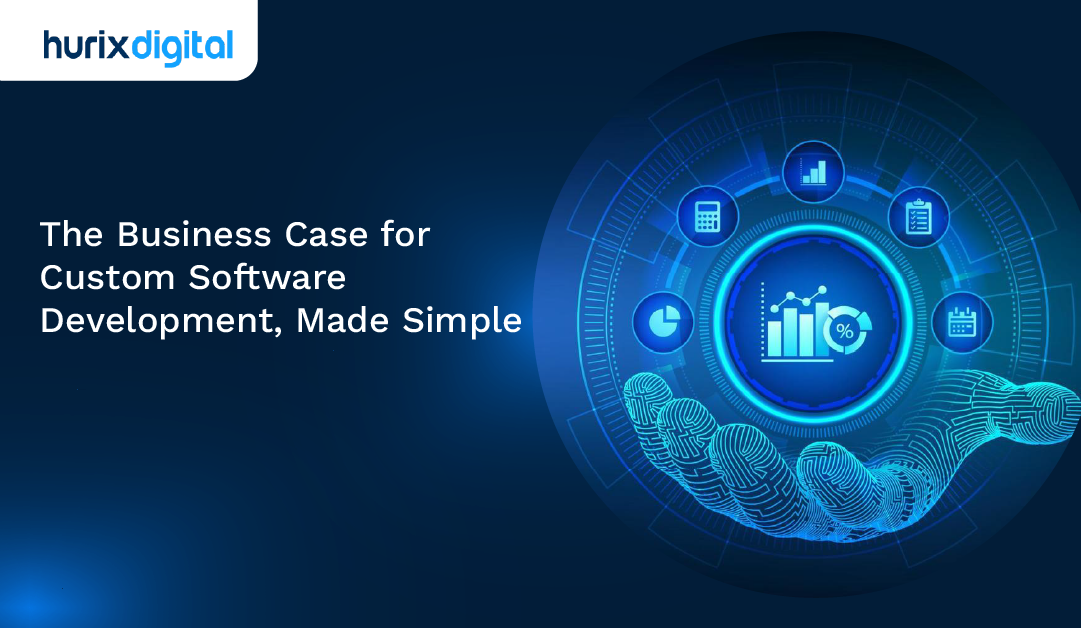
Ways Integration as a Service Powers a Future-Ready Tech Stack!
Summarize with:
With the world running at full throttle, having an agile tech stack has become the need of the hour. You don’t want obsolete integration platforms that crash like a house of cards, posing operational and security threats.
The tech world changes in the blink of an eye. In such a scenario, IT experts put high stakes on future-proof technology stacks. And that’s where integration-friendly platforms come to your rescue. The global market is predicted to reach $32.59 billion by 2029.
This article will explore how businesses can utilize Integration as a Service (IaaS) for IT leaders to mitigate challenges and empower teams.
Before we dive deeper, let’s get our basics right!
Table of Contents:
- What is an Integration Platform?
- What is Integration as a Service (IaaS)?
- Addressing the Challenges of Integration Sprawl
- The 4 Strategic Advantages of Integration as a Service for Businesses
- Integration as a Service (IaaS) Benefits for IT Leaders
- Best Practices for Implementing Integration as a Service
- Selecting the Best IaaS Platforms for Businesses
- Wrapping Up
What is an Integration Platform?
Data is the new oil, but here’s the catch: It’s all scattered.
Let’s understand this with an example: Imagine you are surfing through an elaborate restaurant menu. There are too many options—all haphazardly arranged. As a result, it takes more time to sift through and find what you want.
Now, imagine the same elaborate menu is curated. Wouldn’t it be so efficient to find your favorite food and order it quickly?
Integration platforms are like these compiled and organized menus.
Integration-friendly platforms are a cohesive set of software that allows you to develop, secure, and govern the workflow.
These platforms connect diverse applications and data systems on a central hub, providing flexibility to adapt resources for future technologies.
In addition, these double up as open API platforms, enabling easy API creation and lifecycle management. This allows you to meet a wide range of hybrid integration requirements.
In a nutshell, an integration-friendly platform is the first step in creating a future-proof technology stack. It brings together different applications and data storage across various environments to manage and automate complex business processes.

What is Integration as a Service (IaaS)?
Integration as a Service is a cloud-based delivery model that will help you integrate your organization’s disparate technologies. Under this model, you will outsource your integration projects to a service provider.
The service provider will then offer you comprehensive integration design and implementation services that will help you link the functionality and data of multiple technologies with each other. These would then be incorporated into your organization’s IT infrastructure.
Thus, with IaaS, you will lighten your business’s load by outsourcing your entire integration pipeline from the planning, delivery, and maintenance stages. It is best suited for your organization if you use multiple technological services, and they need to be integrated.
You can use IaaS for multiple actions like:
- Managing your organization’s data storage, setting up reliable backup systems, and carrying out effective data recovery processes.
- Hosting and maintaining your organization’s websites and applications.
- Utilize the tools provided by the IaaS provider to develop and test your organization’s applications.
- Supporting data analytics and thus helping your organization manage its huge datasets.

Addressing the Challenges of Integration Sprawl
Among the many difficulties that integration sprawl can bring about are data silos, duplicate procedures, and higher running expenses. But by using the following techniques, IT managers can successfully minimize these problems:
1. Centralized Data Management
IaaS systems enable companies to connect all systems and applications, thereby dismantling data silos. Offering a whole picture of the company’s operations not only increases data accessibility but also helps in decision-making.
2. Automation of Repetitive Tasks
Many IaaS systems use automation tools to replace human involvement in data movement operations. This not only reduces the risk of mistakes, but it also gives IT staff valuable time.
3. Real-Time Data Synchronization
Real-time data processing is indispensable in the fast-paced corporate climate. IaaS helps companies react effectively to changes by enabling data flow between systems.
4. Reduced Complexity
As companies expand, so does the complexity of their IT environments. By combining several systems via a single IaaS platform, IT managers can simplify processes, lower the chance of mistakes, and improve efficiency.

The 4 Strategic Advantages of Integration as a Service for Businesses
The best IaaS for business leaders will help them maximize its advantages by adding strategic value to their businesses in the following ways:
1. Rapid Integration Deployment with IaaS
With Integration as a Service, you will have pre-built API functions that will help you quickly and efficiently establish connections between different applications and systems.
With no need to complete the integration manually, your developers will have the time and resources to launch new products, services, or features in the market. This will ensure the continued success of your organization.
2. IaaS and Faster Time-to-Value
IaaS offers many connectivity options, including pre-built database connectors, to facilitate communication between your organization’s systems and applications. It also supports different protocols, such as REST, HTTPS, SOAP, and messaging queues.
It also offers the necessary features to create and manage workflows and carry out complex integration processes. This will help you automate your business processes, ensuring a smooth flow of data and coordination.
This will help you achieve a faster deployment and a quicker and higher return on investment (ROI). The use of pre-built connectors and automation will also help you streamline your business’s operations, reduce errors, and improve accuracy and productivity.
3. Increased Business Agility with IaaS
Integration as a Service will also increase your business’s agility because you can scale up or down based on your organization’s integration workload. It also gives you the flexibility to integrate multiple applications and systems.
This will ensure that it supports your business’s growth and helps you adapt easily to technological market changes. The real-time data processing it facilitates will also assist you in making faster and better decisions.
Additionally, these services can be bought on demand, which means that during a fluctuating market, you would not be bogged down by a fixed expense. Rather, you will have the option to adjust this cost to meet your requirements.
4. Comprehensive Management and Security with IaaS
With Integration as a Service, you will also get access to monitoring and management tools that will help you track the health and performance of your integration processes.
To do so, you will have visibility into system status, errors, and messages. This will help you identify and address the issue quickly.
Also, to protect the data during the integration process, IaaS uses security measures like authentication, data encryption, authorization, and compliance controls. This will also help you adhere to the relevant regulatory requirements.

Integration as a Service (IaaS) Benefits for IT Leaders
Adopting IaaS provides many advantages to IT leaders, such as simplified IT operations. Here are some of its significant benefits:
1. Streamlined Integration Management
One of the main benefits of IaaS is its capacity to automate and centralize integration administration. IT managers can monitor and manage all integrations from a single dashboard, lowering the complexity and effort needed to keep these relationships strong.
2. Simplified IT Operations
Businesses can lighten the load on their IT departments by contracting the integration process to specialist vendors. IaaS handles the technical side of integration so that IT departments may concentrate on more strategic projects.
3. Cost-Effective Solutions
Usually running on a subscription-based model, companies pay only for the IaaS services they consume. This approach guarantees that businesses may increase their integration capacity as needed without overspending, lowering initial expenses.
4. Enhanced Security and Compliance
Any integration project revolves around security; hence, IaaS companies invest significantly to guarantee data security across systems. Many IaaS systems also ensure data is safeguarded by complying with industry-specific laws.
Best Practices for Implementing Integration as a Service
Following these recommended practices will help companies fully utilize IaaS:
1. Define Clear Objectives
Clearly define your objectives and goals for your integration plan before implementing IaaS. Knowing your goals with your integrations will help you choose the appropriate IaaS platform and guarantee that it fits your corporate needs.
2. Assess Your Current IT Environment
Carefully review your current IT setup to identify possible problems and areas for development. This evaluation will help you choose an IaaS solution suitable for your current systems and future expansion goals.
3. Engage Stakeholders
Throughout the planning and execution phase, important team members from several departments were involved. Their advice would be much appreciated in ensuring that the selected IaaS platform satisfies every user’s need throughout the company.
4. Continuous Monitoring and Optimization
Once the IaaS platform is used, ongoing observation is crucial to spot problems and maximize performance. Review the integration systems often to ensure they operate as planned and make any necessary changes.
5. Focus on Security
Given data security’s relevance in integrations, ensure the selected IaaS platform provides strong security features, including encryption, multi-factor authentication, and industry compliance with standards.

Selecting the Best IaaS Platforms for Businesses
Selecting the correct IaaS platform is critical for maximizing the benefits of integration and meeting your company’s specific demands. These important elements should help you choose an IaaS vendor:
1. Security and Compliance
Security should be the first concern, considering the delicate nature of the merging data. Search for IaaS companies that comply with pertinent industry standards such as GDPR, HIPAA, or PCI DSS, and provide strong encryption, multi-factor authentication, or both. Providers with a strong background in data security and privacy are preferred.
2. Scalability
Your integration system should adapt to your company’s needs. Ensure the IaaS supplier provides scalable solutions that your company may need to expand into. This covers the capacity to manage growing data volumes and the adaptability to link with newly acquired apps as they are implemented.
3. Performance and Reliability
The performance and dependability of the IaaS platform will mostly determine the success of your integrations. Seek vendors with strong disaster recovery skills, low latency, and high uptime. Regular performance monitoring and optimization should also be part of the service offering.
4. Ease of Use and Implementation
A complicated integration process can negate many of IaaS’s advantages. Selecting a provider with pre-built connectors, a user-friendly interface, and simple tools helps streamline integration implementation and management.
Furthermore, a well-documented API and robust technical support are crucial during integration.
5. Cost-Effectiveness
Consider the IaaS provider’s pricing and choose a service whose clear, adaptable pricing approach fits your budget and usage pattern. Subscription-based arrangements, whereby you pay for what you use, usually offer the best value.
6. Support and Service Level Agreements (SLAs)
Seek out companies that offer complete assistance, including technical knowledge, 24/7 availability, and quick problem resolution. Review the service level agreements (SLAs) to ensure the provider promises the performance and dependability your company needs.
Wrapping Up
Integration as a Service empowers IT leaders with a centralized, automated, and safe platform for managing challenging integrations. By streamlining, IaaS helps companies solve integration sprawl, simplify their IT operations, and concentrate on innovation and expansion.
Integration as a Service is a strategic enabler that can change how businesses run in the digital age for IT professionals trying to stay ahead in a competitive market. IaaS provides the tools you need to reach your objectives, whether your needs are for improved data flow, automated processes, or industry regulatory compliance.
Hurix Digital prioritizes the development of accessible online platforms. Our professionals specialize in combining cloud-managed solutions to guarantee an outstanding user experience.
Get in touch today to learn how IaaS can help your business.
Summarize with:

Vice President & SBU Head –
Delivery at Hurix Technology, based in Mumbai. With extensive experience leading delivery and technology teams, he excels at scaling operations, optimizing workflows, and ensuring top-tier service quality. Ravi drives cross-functional collaboration to deliver robust digital learning solutions and client satisfaction
 Upcoming Masterclass | Build an Army of Brand Evangelists using Training & Development | November 20th, 8:30 AM PDT | 11:30 AM EDT | 10:00 PM IST
Upcoming Masterclass | Build an Army of Brand Evangelists using Training & Development | November 20th, 8:30 AM PDT | 11:30 AM EDT | 10:00 PM IST



